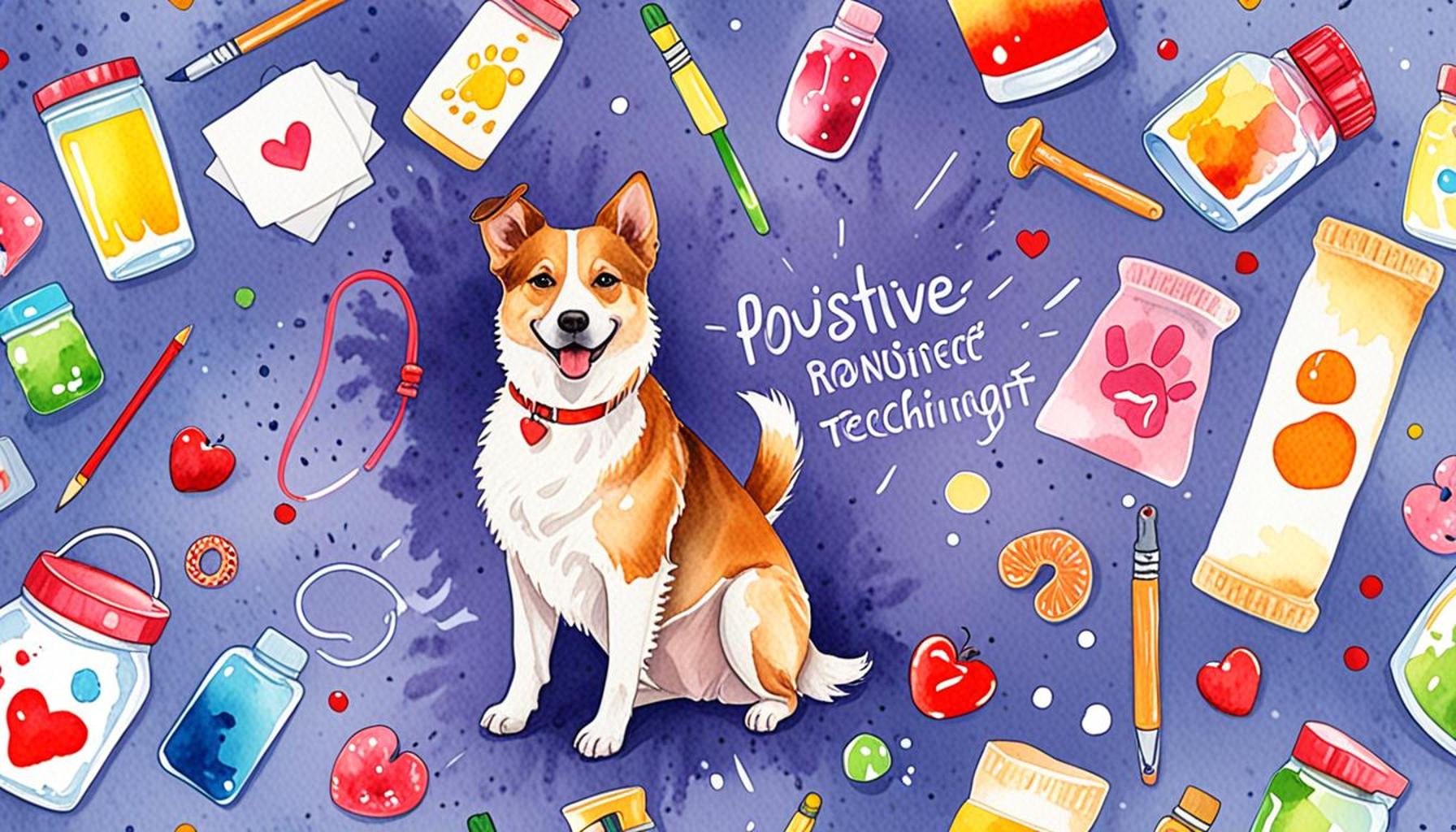Effective Techniques for Teaching Basic Commands to Dogs

Unlocking Your Dog’s Potential
Teaching your dog essential commands can be a truly transformative experience. It not only enhances the communication channel between you and your furry companion but also significantly strengthens the bond you two share. Implementing effective techniques during this process can turn training into an enjoyable adventure that both you and your pet look forward to.
Why Basic Commands Matter
Fundamental commands serve as the bedrock of a well-behaved dog. They are instrumental in promoting safety, improving behavior, and establishing a harmonious environment at home. For instance, a dog that understands the “Sit” command can avoid potential accidents, such as jumping on guests or darting into the street. Meanwhile, teaching “Stay” is crucial in managing high-traffic areas or ensuring your dog’s safety during outdoor walks. Perhaps most importantly, mastering the “Come” command is vital for recall, especially in off-leash situations. Picture this: you’re at a park, and your dog spots a squirrel. A solid recall command can prevent a runaway chase, keeping your dog safe from possible hazards.
Techniques to Consider
Mastering these commands requires not only patience but also consistency in practice. Different techniques appeal to different dogs and their personalities, making it essential to discover the method that resonates with your furry friend. Here are several popular training methods that you might find beneficial:
- Positive reinforcement – This technique uses rewards—whether it be treats, praise, or playtime—to reinforce good behavior. For example, when your dog successfully performs a command, immediate rewards help create a positive association with that action.
- Clicker training – Utilizing a clicker can effectively mark desired behaviors instantly, thus enhancing clarity for your dog. When they perform the command correctly, a quick click followed by a reward teaches them exactly what behavior is being rewarded.
- Short training sessions – Keeping training sessions to roughly 5-10 minutes ensures that your dog remains engaged and doesn’t lose interest. Frequent, short bursts of training can be more effective than long, dull sessions.
By understanding and implementing these various techniques, you can set the stage for a collaborative learning journey with your dog. This shared experience not only facilitates better behavior but also cultivates a deeper, more trusting relationship built on communication and understanding. Prepare to dive deeper into the art of training and possibly transform your dog’s behavior with these compelling strategies.
LEARN MORE: Click here to discover the significance of balanced nutrition for your pet’s health
Training Techniques That Work
When it comes to teaching dogs basic commands, uncovering the right technique is vital for success. Dogs, much like humans, learn best in an environment that fosters trust, clarity, and motivation. Setting the stage for effective teaching means not only choosing a method but also understanding your dog’s unique personality and temperament. Here are some proven techniques that can elevate your training experience:
Positive Reinforcement
Positive reinforcement is one of the most widely accepted and effective methods for teaching dogs. This approach involves rewarding your dog immediately after they follow a command correctly. Rewards can be anything from tasty treats to enthusiastic praise or even their favorite toy. For example, when training your dog to respond to the “Sit” command, say the command and as soon as your dog sits, reward them with a treat and cheerful words like “Good dog!” This immediate reward helps your dog associate the behavior with something positive.
Consistency is Key
Consistency in both commands and rewards is essential. Always use the same word for commands and have all family members do the same. If you allow your dog to ignore the command sometimes but scold them at other times, it creates confusion. Being consistent helps solidify the connection between your commands and their actions, making it easier for your dog to learn.
Clicker Training
Another powerful tool in the training toolbox is clicker training. This method introduces a clicker—a small device that makes a distinctive sound when pressed—into the training process. When your dog correctly performs a command, you make the clicking sound followed by a reward. This technique provides a clear and instant signal that they’ve done something right. Over time, your dog learns to associate the sound of the click with positive reinforcement, making it an effective means of communication.
Short, Frequent Sessions
Attention spans can vary significantly among dogs, so it’s important to optimize your training time. Keeping sessions short—about 5-10 minutes—enhances engagement. Dogs can become distracted or bored with prolonged training, reducing effectiveness. By breaking training into short bursts, you can maintain your dog’s interest and focus, allowing them to absorb the information more effectively.
Socialization During Training
Incorporating socialization into training sessions can greatly enhance your dog’s learning experience. Exposing your dog to various environments, people, and other pets while practicing basic commands like “Come” or “Stay” can help them generalize their skills. Not only does this reinforce their learning, but it also teaches them to remain responsive under different circumstances, which is vital for their safety and wellbeing.
By embracing these effective training techniques, you create a robust foundation for your dog’s obedience training. Remember, the goal is not just to teach commands but to foster a deeper bond between you and your pet, creating a harmonious living environment for both of you. As you progress, savor the small victories, and be patient—every step is part of the journey to a well-trained dog.
Effective Techniques for Teaching Basic Commands to Dogs
Teaching basic commands to dogs is essential for promoting good behavior and establishing clear communication between pets and their owners. Utilizing effective techniques not only enhances obedience but also fosters a strong bond between you and your furry friend. One widely recognized method is positive reinforcement, where you reward your dog for executing commands correctly. This might involve treats, praise, or even playtime. The idea is to create a positive association with following commands. Research indicates that dogs respond better to training that incorporates rewards rather than punishment, making this approach more beneficial in the long term.Another popular technique is clicker training, which uses a clicking sound to mark desired behaviors. When paired with treats, this creates a clear signal for the dog, reinforcing the behavior you’re trying to teach. Clicker training helps in building a precise understanding of what the dog is doing right—this clarity can significantly enhance learning efficacy.Moreover, incorporating consistency and patience into your training sessions is crucial. Repeating commands and maintaining a steady schedule can lead to better retention of learned behaviors. Knowing how long to train and how frequently to practice can make all the difference. Training should be enjoyable and not prolonged; short, frequent sessions are often more effective than longer, less frequent ones. Additionally, socialization plays a critical role in a dog’s response to commands. Exposure to different environments, people, and other dogs helps reduce anxiety and promote confidence, making it easier for your pet to learn. For an organized overview of various techniques and their benefits, refer to the table below:
| Training Technique | Benefits |
|---|---|
| Positive Reinforcement | Establishes trust and motivation for the dog. |
| Clicker Training | Provides clear communication and rapid learning. |
| Consistency | Improves recall and retention of commands. |
| Socialization | Reduces anxiety, making dogs more receptive to training. |
With these techniques in mind, dog owners can take proactive steps towards effective training that enhances their pet’s understanding of basic commands, paving the way for a harmonious relationship. Embracing these methods not only improves behavior but also enriches the emotional connection between you and your dog, leading to a joyful and fulfilling companionship.
DIVE DEEPER: Click here for insights on effective puppy socialization
Maximizing Your Training Potential
As you embark on the journey to teach your dog basic commands, understanding how to maximize the training process can lead to a more fruitful experience. Effective command teaching is not simply about getting your dog to obey; it’s about creating a lasting relationship built on trust, understanding, and joy. Here are some additional strategies to enhance your dog training sessions:
Use Real-Life Reinforcement
While treats and toys are excellent rewards, consider employing real-life reinforcement as a means of motivation. This involves using everyday situations to reinforce commands. For instance, if your dog reliably responds to “Sit,” you can use this command to help them have a pleasant experience at the park, such as waiting to greet other dogs or people. Such integrations not only reinforce the command but also build a sense of responsibility and structure in various environments.
Teach in Context
Building on real-life reinforcement, teaching commands within context will greatly enhance learning. Utilize familiar settings and integrate commands into daily routines. For example, during walks, you can reinforce commands like “Heel” or “Leave it” when encountering distractions. This contextual learning allows your dog to comprehend when and where certain behaviors are expected, leading to better retention and understanding.
Vary Your Rewards
To keep your dog’s enthusiasm high, vary your rewards. Dogs can become bored with the same treats or toys. Mixing things up by using different kinds of treats—some high-value for challenging tasks and others less enticing for basic commands—can keep your dog engaged. Additionally, incorporating playtime or affection as rewards can further maintain interest. Remember, the ultimate goal is to make the learning process exciting and enriching for your pet.
Gradual Progression
It’s essential to allow your dog to progress at their own pace. Some dogs may grasp commands quickly, while others will require additional time. Gradual progression means starting with simpler commands, such as “Sit” or “Stay”, and slowly introducing more complex tasks once these are mastered. Patience is critical; avoid rushing the learning process to prevent frustration for both you and your dog.
Utilize Technology
Considering the digital age we live in, leveraging technology can greatly improve your dog training experience. Numerous apps and training videos offer innovative techniques that can be integrated into your sessions. Additionally, engaging with online communities of dog owners and trainers can provide valuable insights, training tips, and support. Sharing experiences can keep you motivated and open up new ways to refine your training strategy.
Seek Professional Help When Needed
Sometimes, the best option is to hire a professional trainer, especially for dogs struggling with commands or exhibiting behavioral issues. A certified dog trainer can provide tailored techniques suited to your dog’s individual needs and strengths. They often employ effective methods that extend beyond basic commands and ensure your dog becomes a well-mannered companion. Don’t hesitate to reach out and invest in your training journey if you feel overwhelmed or need additional guidance.
By implementing these strategies into your training routine, you’ll create lucrative opportunities for learning that benefit both you and your furry friend. Emphasizing real-life experiences, context, and versatility in training will not only develop your dog’s ability to respond to commands but also deepen your bond in the process. Embrace each session as a chance to grow together—after all, training is truly a journey marked by shared victories and joyous moments.
DISCOVER MORE: Click here to learn about your cat’s body language
Conclusion: Enhancing the Training Experience
Teaching your dog basic commands is an essential foundation for building a harmonious relationship between you and your furry companion. By incorporating a variety of effective techniques, you can not only enhance their learning experience but also strengthen the bond you share. The key to successful training lies in consistency, patience, and creativity.
Utilizing real-life reinforcement and contextual learning can make the commands more meaningful and applicable in everyday situations. This real-world application not only affirms your dog’s learning, but also builds their confidence as they navigate various environments. Remember, varied rewards keep training fresh; by mixing treats, playtime, and affection, you can maintain your dog’s enthusiasm and eagerness to learn.
As you progress, allow for gradual advancements tailored to your dog’s unique learning style. Every dog is different—some may thrive under more complex scenarios while others may require additional time to grasp the basics. Embrace technology as a resource with apps and online communities ready to support you, and don’t hesitate to seek professional help for specialized guidance when necessary.
Ultimately, the journey of training your dog is not just about obedience; it’s about fostering trust and affection. With persistence and the right techniques, you’ll find that both you and your dog can celebrate successes together, transforming training sessions into meaningful moments that reinforce your lifelong bond. Dive deeper into these strategies, explore their benefits, and watch your relationship flourish through the power of effective training.


